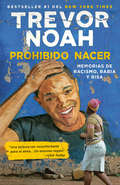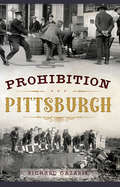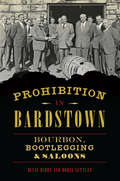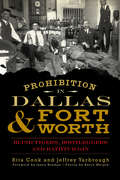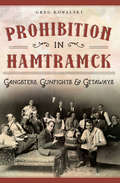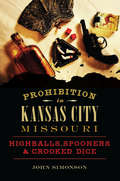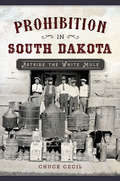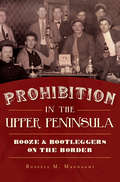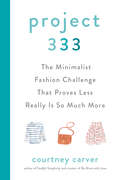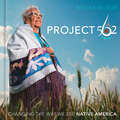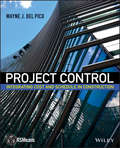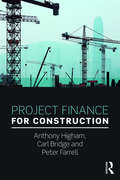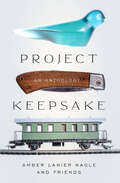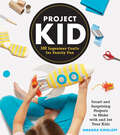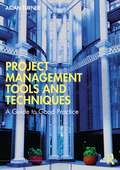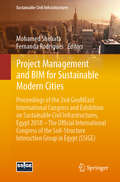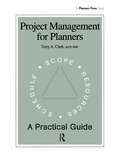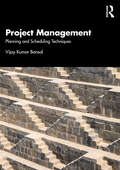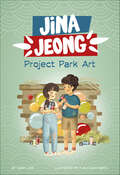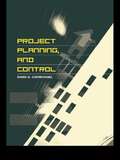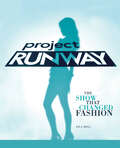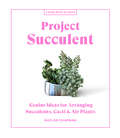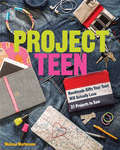- Table View
- List View
Prohibido nacer: Memorias de racismo, rabia y risa.
by Trevor NoahMÁS DE UN MILLÓN DE EJEMPLARES VENDIDOS NOMBRADO UNO DE LOS MEJORES LIBROS DEL AÑO POR Michiko Kakutani, New York Times • USA Today • San Francisco Chronicle • NPR • Esquire • Newsday • Booklist La impresionante trayectoria de Trevor Noah, desde su infancia en Sudáfrica durante el apartheid hasta el escritorio de The Daily Show, comenzó con un acto criminal: su nacimiento. Trevor nació de un padre suizo blanco y una madre Xhosa negra, en una época de la historia sudafricana en que tal unión era castigada con cinco años de prisión. Como prueba viviente de la indiscreción de sus padres, Trevor permaneció los primeros años de su vida bajo el estricto resguardo de su madre, quien se veía obligada a tomar medidas extremas —y, a veces, absurdas— para ocultar a Trevor de un gobierno que podría, en cualquier momento, llevárselo. Prohibido nacer es la historia de un niño travieso que se convierte en un joven inquieto mientras lucha por encontrarse a sí mismo en un mundo en el que nunca se suponía que debía existir. También es la historia de la relación de ese joven con su intrépida, rebelde y ferviente madre religiosa: su compañera de equipo, una mujer decidida a salvar a su hijo del ciclo de pobreza, violencia y abuso que en última instancia amenazaría su propia vida.
Prohibition Pittsburgh (Murder & Mayhem)
by Richard GazarikPittsburgh is a hardworking city. And hard workers sometimes enjoy the occasional spirit. So, when Prohibition hit the Steel City, it created a level of violence and corruption residents had never witnessed. Illegal producers ran stills in kitchens, basements, bathroom tubs, warehouses and even abandoned distilleries. War between gangs of bootleggers resulted in a number of murders and bombings that placed Pittsburgh on the same level as New York City and Chicago in criminal activity. John Bazzano ordered the killing of the Volpe brothers but did so without the permission of Mafia bosses. His battered body was later found on the street in Brooklyn. Author Richard Gazarik details the shady side of the Steel City during a tumultuous era.
Prohibition in Bardstown: Bourbon, Bootlegging & Saloons (American Palate)
by Dixie Hibbs Doris SettlesSome Bardstown, Kentucky residents argued for an alcohol ban as early as the mid-1800s despite the fact that whiskey and bourbon were local staples. When Prohibition finally arrived, independent and inventive residents secretly kept the city wet. A deacon once stored whiskey in a baptismal pool. Seventy-year-old Aunt Be-At Hurst allegedly made her homebrew out of her bathtub. Some locals even burned distillery warehouses to cover up thefts. Crime ran so rampant that revenue collector Robert H. Lucas threatened to have the governor summon the state militia. Join historians Dixie Hibbs and Doris Settles as they detail the history of Bardstown booze.
Prohibition in Dallas & Fort Worth: Blind Tigers, Bootleggers and Bathtub Gin (American Palate)
by Rita Cook Jeffrey YarbroughA place with "wild men and wilder women," 1920s Dallas boasted one bar for every one hundred people, and a thirsty Texan could find a drink nearly anywhere. Although home to the Texas Anti-Saloon League, drinks never stopped pouring in Dallas and Fort Worth, fueled by the likes of Jack Ruby, Benny Binion, saloons and dance halls. Homegrown moonshine and bathtub gin yielded specialty recipes that today's barkeeps have honed into tasty concoctions for a contemporary palate. Join Rita Cook as she explores prohibition in Dallas and Fort Worth and learn from Jeffrey Yarbrough and his band of local mixologists about their modern takes on classic drinks so readers can step back in time, drink in hand.
Prohibition in Hamtramck: Gangsters, Gunfights & Getaways (American Palate)
by Greg KowalskiThe National Prohibition Act was no match for Hamtramck. Once a small farming village, Hamtramck grew to be a major industrial city in just a decade. With that came enormous social problems and a peculiar concept that the legality of alcohol wasn't a constraint but, rather, an opportunity. Flaunting the infamous law became a way of life in Hamtramck, where it was as easy to get a drink as an ice cream cone. Paddy McGraw proudly ran his speakeasy and brothel with impunity. Mayors Peter Jezewski and Rudolph Tenerowicz were sent to prison for violations but were rewarded by the public. Join author Greg Kowalski as he delves into Hamtramck's raucous prohibition history.
Prohibition in Kansas City, Missouri: Highballs, Spooners & Crooked Dice (American Palate)
by John SimonsonLike most cities during Prohibition, Kansas City had illegal alcohol, bootleggers, speakeasies, cops on the take, corrupt politicians and moralizing reformers. But by the time the Eighteenth Amendment was repealed, Kansas City had been singled out by one observer as one of the wettest cities, as well as the wickedest. A grocer managed a still in the basement of his store. A raid on the Tingle Oil Company found two hundred drums of oil and the largest illegal brewery ever found in the state. This seedy underworld transformed the Heart of America into the Paris of the Plains. Author John Simonson resurrects forgotten stories by revisiting places where they occurred and telling the salacious history of booze in Kansas City.
Prohibition in South Dakota: Astride the White Mule
by Chuck CecilSouth Dakota has always had an intermittent relationship with prohibition. Constantly changing legislation kept citizens, saloonkeepers, bootleggers and other scofflaws on tenterhooks, wondering what might come next. The scandalous indiscretions of the lethal Verne Miller and the contributions of "agents of change" like Senators Norbeck and Senn kept ne'er-do-wells on edge. In 1927, the double murder of prohibition officers near Redfield dominated headlines. From the Black Hills stills of Bert Miller to the Sioux Falls moonshine outfit buried under Lon Vaught's chicken house, uncork these oft-overlooked and tumultuous eighteen years in state history. In the first book of its kind, award-winning journalist Chuck Cecil delivers the boisterous details of an intoxicating era.
Prohibition in the Upper Peninsula: Booze & Bootleggers on the Border (American Palate)
by Russell M. MagnaghiTemperance workers had their work cut out for them in the Upper Peninsula. It was a wild and woolly place where moonshiners, bootleggers and rumrunners thrived. Al Capone and the Purple Gang came north to keep Canadian whiskey passing through Sault Ste. Marie to Chicago and Detroit. Federal enforcement agent John Fillion double-crossed both his office and the bootleggers. The Grand Hotel on Mackinac Island survived due to gambling and fine Canadian whiskey brought in by rumrunners, sometimes assisted by the Coast Guard. Author Russell M. Magnaghi dives into the raucous history of Yooper Prohibition.
Project 333: The Minimalist Fashion Challenge That Proves Less Really is So Much More
by Courtney CarverWear just 33 items for 3 months and get back all the JOY you were missing while you were worrying what to wear.In Project 333, minimalist expert and author of Soulful Simplicity Courtney Carver takes a new approach to living simply--starting with your wardrobe. Project 333 promises that not only can you survive with just 33 items in your closet for 3 months, but you'll thrive just like the thousands of woman who have taken on the challenge and never looked back. Let the de-cluttering begin! Ever ask yourself how many of the items in your closet you actually wear? In search of a way to pare down on her expensive shopping habit, consistent lack of satisfaction with her purchases, and ever-growing closet, Carver created Project 333. In this book, she guides readers through their closets item-by-item, sifting through all the emotional baggage associated with those oh-so strappy high-heel sandals that cost a fortune but destroy your feet every time you walk more than a few steps to that extensive collection of never-worn little black dresses, to locate the items that actually look and feel like you. As Carver reveals in this book, once we finally release ourselves from the cyclical nature of consumerism and focus less on our shoes and more on our self-care, we not only look great we feel great-- and we can see a clear path to make other important changes in our lives that reach far beyond our closets. With tips, solutions, and a closet-full of inspiration, this life-changing minimalist manual shows readers that we are so much more than what we wear, and that who we are and what we have is so much more than enough.
Project 562: Changing the Way We See Native America
by Matika WilburNEW YORK TIMES BESTSELLER • A photographic and narrative celebration of contemporary Native American life and cultures, alongside an in-depth examination of issues that Native people face, by celebrated photographer and storyteller Matika Wilbur of the Swinomish and Tulalip Tribes.&“This book is too important to miss. It is a vast, sprawling look at who we are as Indigenous people in these United States.&”—Tommy Orange (Cheyenne and Arapaho), author of There ThereLonglisted for the Andrew Carnegie MedalIn 2012, Matika Wilbur sold everything in her Seattle apartment and set out on a Kickstarter-funded pursuit to visit, engage, and photograph people from what were then the 562 federally recognized Native American Tribal Nations. Over the next decade, she traveled six hundred thousand miles across fifty states—from Seminole country (now known as the Everglades) to Inuit territory (now known as the Bering Sea)—to meet, interview, and photograph hundreds of Indigenous people. The body of work Wilbur created serves to counteract the one-dimensional and archaic stereotypes of Native people in mainstream media and offers justice to the richness, diversity, and lived experiences of Indian Country.The culmination of this decade-long art and storytelling endeavor, Project 562 is a peerless, sweeping, and moving love letter to Indigenous Americans, containing hundreds of stunning portraits and compelling personal narratives of contemporary Native people—all photographed in clothing, poses, and locations of their choosing. Their narratives touch on personal and cultural identity as well as issues of media representation, sovereignty, faith, family, the protection of sacred sites, subsistence living, traditional knowledge-keeping, land stewardship, language preservation, advocacy, education, the arts, and more.A vital contribution from an incomparable artist, Project 562 inspires, educates, and truly changes the way we see Native America.
Project Control
by Wayne J. Del PicoThe key to successful project control is the fusing of cost to schedule whereby the management of one helps to manage the other. Project Control: Integrating Cost and Schedule in Construction explores the reasons behind and the methodologies for proper planning, monitoring, and controlling both project costs and schedule. Filling a current void the topic of project control applied to the construction industry, it is essential reading for students and professionals alike.
Project Finance for Construction
by Peter Farrell Anthony Higham Carl BridgeThe world of construction is intrinsically linked with that of finance, from the procurement and tendering stage of projects right through to valuation of buildings. In addition to this, things like administrations, liquidations, mergers, take-overs, buy-outs and floatations affect construction firms as they do all other companies. This book is a rare explanation of common construction management activities from a financial point of view. While the practical side of the industry is illustrated here with case studies, the authors also take the time to build up an understanding of balance sheets and P&L accounts before explaining how common tasks like estimating or valuation work from this perspective. Readers of this book will not only learn how to carry out the tasks of a construction cost manager, quantity surveyor or estimator, they will also understand the financial logic behind them, and the motivations that drive senior management. This is an essential book for students of quantity surveying or construction management, and all ambitious practitioners.
Project Keepsake: An Anthology
by Amber Lanier NagleFascinating personal histories are revealed through the stories of cherished objects, in this anthology celebrating the meaningful mementos of our lives. Amber Lanier Nagle has always been interested in keepsakes, whether her own or those she encounters in her friends&’ homes. Seemingly ordinary items—a glass bluebird, a pocketknife, a dime-store locket, a faded fishing lure, a dented cake pan, a model train car—become priceless treasures when their stories are uncovered. In Project Keepsake, Nagle collects the tales of these objects and their beloved memories from contributors near and far. &“Why do you keep this?&” Nagle asks. &“Where did it come from?&” And then she listens as the stories pour out. Told in first-person by both seasoned and aspiring writers, every essay in the anthology is unique—yet each reveals common threads that connect us all and celebrate the glorious human experience.
Project Kid: 100 Ingenious Crafts for Family Fun
by Amanda KingloffPerfect for crafty parents who are eager to get their kids excited about DIY, ProjectKid is everything you could want in a craft book: 100(!) stylish, inventive projects; step-by-step photographs; tips for the novice crafter; easy-to-follow instructions; and a fresh, modern look. What really sets these projects apart are the unexpected, ingenious ways Kingloff uses everyday objects and materials. (Did you ever think a body-wash bottle would make a perfect rocket ship?) And these are projects for things kids want to make—and keep—from a juice-box owl to a pirate ship to a curio cabinet for displaying all of their treasures, plus games, jewelry, and more. Also included in the book are basic crafting lessons (such as pom-pom making and weaving) to help children of all ages build a DIY arsenal, a handy guide to must-have tools and materials, and a source directory.
Project Kid: 60 Imaginative Projects That Fly, Sail, Race, and Dive
by Amanda KingloffThomas the Tank Engine. Hot Wheels. Mike Mulligan and His Steam Shovel. Richard Scarry’s Cars and Trucks and Things That Go. Kids’ fascination with vehicles is insatiable. In Project Kid: Crafts That Go!, that excitement is translated into more than 60 inventive craft projects for parents to make with and for their children. The book is organized into seven chapters: City, Rails, Sky, Space, Water, Country, and Dirt. There are police cars and ice cream trucks; circus trains and submarines; helicopters, rocket ships, cement mixers, and school buses. And because the car-obsessed kid doesn’t just want a new vehicle to play with—he wants a racetrack, his very own driver’s license, maybe even a child-sized gas station—each chapter includes not only toys but also thematic clothing, decor, accessories, and more. Projects feature clear instructions and step-by-step photographs wherever they are needed, easy for both kids and non-crafty adults to understand.
Project Management Demystified
by Geoff ReissConcise, practical and entertaining to read, this excellent introduction to project management is an indispensable book for professionals and students working in or studying project management in business, engineering or the public sector. This third edition contains expanded sections on programme management, portfolio management, and the public sector. An entirely new chapter covers the evaluation, analysis and management of risks and issues. A much expanded section explores the rise and utilization of methodologies like Prince2.
Project Management Tools and Techniques: A Guide to Good Practice
by Aidan TurnerProject Management Tools and Techniques: A Guide to Good Practice presents a unique approach to the teaching of project management by blending theory, application, and case studies. Each chapter focuses on a specific tool or technique used by the project manager in a practical and applied way. The chapters approach this by addressing the following questions: · What does the tool or technique provide for the project?· How is the tool/technique delivered, managed, and used?· A case study of the tool or technique in use· The historical context and development of the toolThis book covers core tproject management opics such as project feasibility, lifecycle, scheduling, budgets, risk, complexity, leadership, handover and much more. Together the four sections of each chapter look at the benefits of using the PM process, or ‘why the process is used’ followed by ‘how it is delivered’ and then address ‘what can go wrong if it is ignored’ before noting its development as a tool within Modern Project Management. Each chapter includes a discussion of how each tool has developed using examples of landmark projects throughout the world to enable the reader to bring the theoretical and practical elements together. This new textbook covers essential skills required for successful project management, allowing both students and practitioners to apply the topics discussed directly to their environment, heightening understanding of the what, how, and why of project management. This book is suitable for use on a variety of global project management courses in disciplines across engineering, built environment, and business. It is also a useful reference for newly established PMs looking for a handy toolkit.
Project Management and BIM for Sustainable Modern Cities: Proceedings of the 2nd GeoMEast International Congress and Exhibition on Sustainable Civil Infrastructures, Egypt 2018 – The Official International Congress of the Soil-Structure Interaction Group in Egypt (SSIGE) (Sustainable Civil Infrastructures)
by Fernanda Rodrigues Mohamed ShehataThis volume presents innovative work on innovative methods, tools and practices aimed at supporting the transition of Asian and Middle Eastern cities and regions towards a more smart and sustainable dimension. The role of the built and urban environment are becoming more pronounced in Asia and Middle East as the regions continues to experience rapid increase in population and urbanisation, which have only led to an increase in environmental degradation but also rise in energy consumption and emissions. Individual chapters covers timely topics such as sustainable infrastructure, transportation, renewable energy, water and methods supporting an innovative and sustainable development of urban areas. Real-world examples are presented to highlight recent developments and advancements in design, construction and transportation infrastructures. The volume is based on the best contributions to the 2nd GeoMEast International Congress and Exhibition on Sustainable Civil Infrastructures, Egypt 2018 – The official international congress of the Soil-Structure Interaction Group in Egypt (SSIGE).
Project Management for Planners: A Practical Guide
by Terry A. ClarkThis book provides practicing planners with the knowledge of how to bring real world planning projects to a successful and efficient. It applies the five process groups of project management as identified in Project Management Institute's PMBOK® Guide and put them in the language of planners.
Project Management: Planning and Scheduling Techniques
by Vijay Kumar BansalProject Management:Planning and Scheduling Techniques is a highly readable guide to the essentials of project planning, scheduling, and control aimed at readers looking for an introduction to the core concepts of planning and scheduling, including the ‘Critical Path Method’, but also the ‘Precedence Diagramming Method’, the ‘Line of Balance’ technique, and the ‘Programme Evaluation and Review Technique’. This book explains the theory behind the methods and makes effective use of learning outcomes, exercises, diagrams, and examples to provide clear and actionable knowledge for students and project managers. The book can be used as a classroom textbook or as a self-study guide for project managers taking their professional qualifications, and it includes examples from a wide range of project management scenarios. It is suitable for planning and scheduling courses in the fields of industrial, civil, and mechanical engineering, construction, and management.
Project Park Art (Jina Jeong)
by Carol KimJina Jeong wants to clean up graffiti! When Jina discovers ugly graffiti on a park wall, she and her friends try to clean it up themselves with little luck. Then Jina discovers that not all graffiti is ugly, and some street artists create beautiful works of public art. Jina and her friends, along with the help of street artists, turn the graffiti in the park into something everyone can enjoy.
Project Planning, and Control
by David G. CarmichaelProject management is widely used in the construction industry and is central to planning and controlling time, costs and resources. This book enables readers to perform more effectively, to understand project planning and control procedures and to gain an insight into the associated skills. Numerous case examples from diverse industries and exercises support and illustrate important concepts. The result is a new perspective for project managers: planning can be shown to be a systems synthesis or an inverse problem, which provides a way to reach a satisfactory solution, avoiding the time-consuming or impractical search for the optimal solution.
Project Runway: The Show That Changed Fashion
by Eila MellUltimate guide to "Project Runway," features hundreds of photos, the highlights of seasons past, and interviews with designers and stars.
Project Succulent: Genius Ideas for Arranging Succulents, Cacti & Air Plants (Living with Plants)
by Baylor ChapmanEasy to Find, Easy to Grow, Easy to Love Succulents appear in myriad shapes, colors, and textures and are some of the easiest plants to care for (less water is more!). In this step-by-step guide, adapted from The Plant Recipe Book, author Baylor Chapman shows us how to choose among these beauties to create arrangements and tiny terrariums like a Desert View, which includes burro&’s tails and zebra plants, or the Zen Garden, with rabbit ear cacti, pincushion cacti, and a little Morgan&’s Beauty.
Project Teen: Handmade Gifts Your Teen Will Love; 21 Projects to Sew
by Melissa MortensonPlease the pickiest tech-savvy teens and tweens with these 21 trendy projects you can sew.Most of us would agree that sewing something that teens will like is, without a doubt, a challenge. In Project Teen, Melissa Mortenson, sewist and mother of three teenagers, shares not only her 21 teen-approved designs, but also invaluable tips and tricks for sewing for this unique (a.k.a. picky) age group. Whether you make a stylish tech cover, a cushy study pillow, or a personalized quilt, your teen will love these handmade gifts as much as you love them.• 21 projects, specifically for teens and tweens (ages 11+), including quilts, T-shirts, tech covers, totes, accessories, and so much more• Lots of inspiring ideas and designs for the perfect gifts• Get the 411 on what’s cool when it comes to fabric and style—so that your teen is sure to love what you make!Praise for Project Teen“Mortenson has a good eye for what teenagers actually need and want. . . . Something here will appeal to that trickiest of demographics, making the book a worthwhile buy.” —Publishers Weekly“Project Teen is a fresh, mod, fun way to sew for the tweens/teens in our life - kids, grands, nieces & nephews. The projects meet the ever changing needs of kids, from travel blankets and tablet covers to simple bags to store everything in.” —Generation Q Magazine
